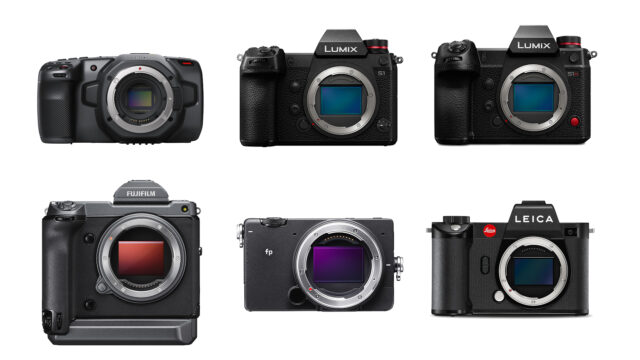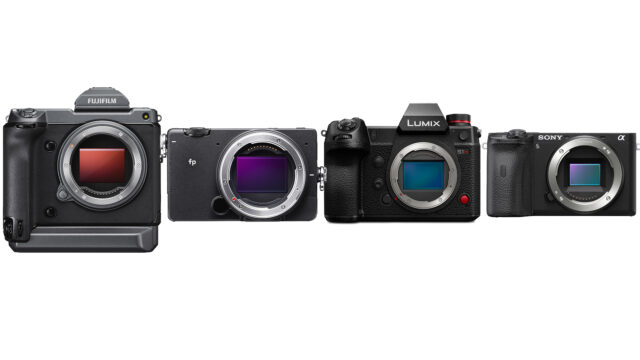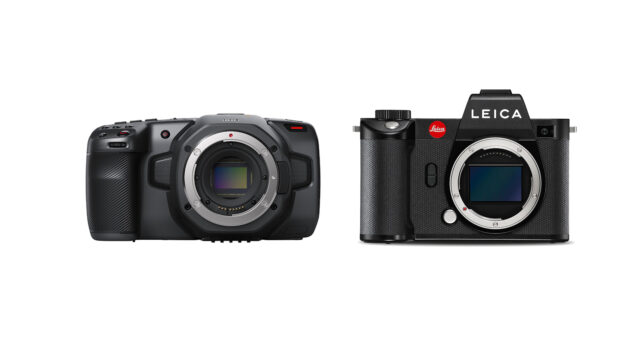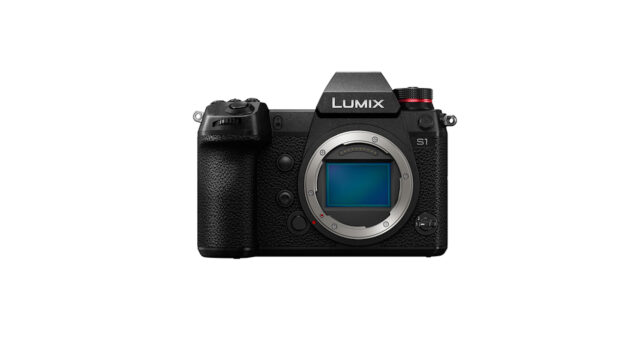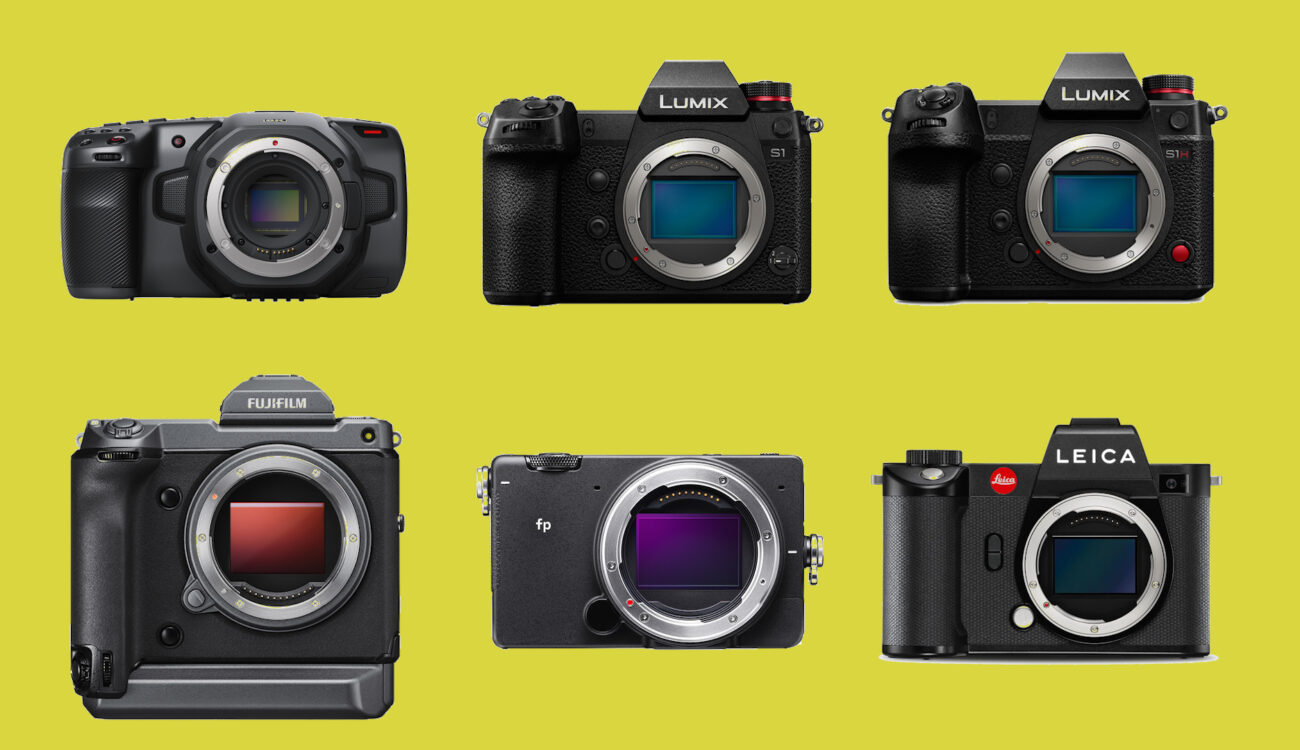
Slowly but surely, the year 2019 is fading out, and there is no better time to conclude and see if there is a camera we can declare as the clear winner of this year. Blackmagic Design, Panasonic, Leica, SIGMA, FUJIFILM and Sony – all those respected manufacturers worked hard to satisfy our (production) video needs. Did any of them do exceptionally well, catching our attention? Let’s dive in and see.
Large sensor photo cameras that can shoot high quality video? Touchy subject… Remember all those who predicted that VDSLRs or mirrorless cameras will be abandoned by users the moment “true” large sensor video cameras will appear? Well, the truth is quite the opposite. We’ve never seen such a wide selection of offerings fuelled by massive competition between camera manufacturers – in our hearts, as well as pockets. As active content creators who value the “tools”, of course we should be happy. Technical progress is being made year after year, picture quality is getting better, functionality is being enhanced and prices, in general, are becoming comfortable. But is there a good reason for joy?
The Future – Will Mobile Phones Eat Everybody’s Lunch?
I’m actually choosing to continue my article with a melancholic perspective. It is no secret that the traditional camera market is rapidly shrinking and sales are dropping sharply. Is there any single reason to take the blame? Is the giant quantum leap that mobile phone manufacturers have made, when it comes to capturing images, the reason? – Maybe. Reading the market, respected traditional camera manufacturers find themselves having to look for alternative sources of income. Even the ones who have never believed that video in stills cameras is valuable had to go along with the trend. But, is this move enough to survive in this market? Is there a way to “combat” the increasing dominance of mobile phones for anyone but professional photographers and video shooters?
In my opinion, these are relevant questions – especially as smartphones have reached a level of functionality and speed where average users are content with the phone they have, the manufacturers’ way to show progress is by enhancing the photo and video capabilities of their devices. The amount of money being poured into the development of smartphone cameras can’t be matched by the investment of any traditional camera manufacturer! Now, if you’ve been asking yourself why am I drilling your brain instead of getting to the point (this article is about the best camera of the year, after all), it is because this may be the last year where our list consists of traditional cameras. I bet that 2020 or 2021 will look completely different, unless we as users will show responsibility and try to support those companies who are doing so much for us by planning, developing, manufacturing and selling their cameras. (And for complete transparency, we at cinema5D will cover, report and test upcoming mobile phone cameras too, yet at the same time, of course, without compromising the attention we give to more “traditional” filmmaking tools, too).
OK, now that this is off my chest (not really, but as Elsa from Frozen said “let it go”), let’s be reminded of what we’ve covered this year and believe me, it was an extremely busy one!
Instead of going the “usual way” and divide entries by sensor sizes, I’ve decided on two strengths. Picture Quality and Technical Achievements are the sub categories I chose to go with. If you guys feels like I’ve missed or neglected anything, please don’t hesitate to jump in. Please join the conversation and add your comment in the section down below.
Camera of the Year 2019 – Technical Achievements
Hope you guys will agree with me. There are NO bad cameras anymore. Some filming devices which do the job better than others, but all in all, we could have just dreamed about such performance and quality (especially for the price) a few years back. In fact, the best camera of the year 2018, the FUJIFILM X-T3 is still serving me very well. At times, I even wonder if any of the 2019 offerings really surpasses it, to the point where it’s worth considering exchanging…
Anyways.
For me personally, three cameras stood out of the crowd when it comes to technical achievements. FUJIFILM with their GFX 100, SIGMA with their fp camera, and Panasonic with their S1H. Each one for very different reasons. The forth candidate is Sony with their advanced autofocus system that can be found in the new a6600 and a7R IV. (Animal lovers can surly appreciate the new Animal AF technology).
FUJIFILM GFX 100 – Defining Large Sensor Video Recording ($9,999)
During this year, I was lucky enough to document the birth of FUJIFILM’s GFX 100 (please watch our BTS videos below and witness how magic happens). What really caught my attention during filming, was seeing how dedicated and committed the people behind the project are!
For us the filmmaker crowd, 100 million pixels might prove to be not so relevant, but the large stabilized sensor size is of course revolutionary. Never before was it possible or so easy to pick up such a camera and shoot handheld video, with such clarity and quality. True, the price is not for everyone, but now that FUJIFILM have declared the medium format sensor format to be their “full frame device”, I wish they will consider going the same path for a fully video orientated camera at a more affordable price.
FUJIFILM GFX 100 Main Advantages:
- Large format sensor
- 4K (DCI), All Intra, 10-bit, up to 400 Mbps internal recording
- Excellent Internal Body Stabilisation System
- Eterna Picture Profile built in
- Good built-in audio
I also want to encourage you guys to take a look at Philip Bloom’s full length documentary,“Charmolipi: joy making sorrow”. It was shot with the GFX 100 and is a great example of deploying it in the field!
Below: Our 2 part documentary. How the FUJIFILM GFX 100 is being made:
SIGMA fp – When Small Form Factor becomes Beautiful and Capable ($1,899)
SIGMA have caught the filmmaking community by surprise. No one really expected the successful lens manufacturer to come up with a revolutionary filmmaking device. We were lucky enough to witness and document the process of manufacturing the camera and also given the opportunity to test and review one of the first units before it was commercially available.
As an advocate of compact and capable filming cameras, I think that SIGMA brought some playful fresh wind into our traditional (ageing?) industry. Backed by its own supporting accessories, this “joyful to use” fp camera has the true potential to shake things up and pave its way to glory. It is the smallest full frame camera out there that supports internal and external Cinema DNG RAW recording, (external compressed RAW recording via HDMI will be available soon too). Of course, there are some shortcomings (no camera is perfect), and I would have loved seeing better autofocus and an internal body stabilisation system included, for example, but in this particular “Best Camera of the Year ” article, seeing the full half of the cup is shading the empty part.
SIGMA fp Main Advantages:
- Full frame TRUE pocket camera
- Uncompressed RAW recording (internal up to 8 bit and externally up to 12 bit)
- Lots of technology is packed into this little marvel, but what I like best is the support SIGMA is offering with their own custom made accessories.
Additional SIGMA fp information – including our lab test – can be obtained by clicking here.
Panasonic S1H – Feature-Packed and Ready for (Netflix) Show Time ($3,999)
Waiting for the Sony a7S III? Well, the wait is over. The Panasonic S1H is here. (My humour has to be taken lightly…) This very capable, packed-with-features camera was introduced in segments, just a little at a time. Panasonic managed to equip the camera with an endless list of resolutions, bit and frame rates to choose from, all the way up to 6K. While the video quality this camera can produce is nice, I’ll repeat mentioning its Achilles heel. The internal noise reduction being implemented within is simply too strong, up to the point of the image becoming too clean.
Panasonic S1H Main Advantages:
- Internal high quality recording
- Very flexible camera. Choosing the desired recording mode/frame rate/resolution/bit rate is a breeze
- Excellent In Body Stabilisation System
- Excellent EVF
- Very good lowlight capability
- 3:2 sensor. A good match to anamorphic lenses
- Dual ISO sensor
Additional Panasonic S1H information – including our lab test – can be obtained by clicking here.
Sony – Taking Autofocus to the Next Possible Level
Sony was very active this year by offering a variety of 1”, APS-C and full frame mirrorless cameras but at the end of the day, the video functionality of all those cameras is rather equal. (Limited to 100 Mbps data rate, Long GOP encoding, up to 30 fps and more). The only noticeable field where Sony has shown advanced operation with their current offerings is the autofocus functionality. All of their newer cameras can autofocus nicely, but as a “proof of concept”, I chose to include the following a6400 video:
What’s noteworthy about the current top-model of their APS-C cameras, the Sony a6600, it now has image stabilization built in, and uses the larger, MUCH better batteries now.
In fact, I was so impressed with the autofocus performance of the a6400 when I tested it that I publicly (half-jokingly) asked our audience if the “End of manual focus lenses is near“. This is yet to be seen, but for now, as we are under the Technical Achievements section, I feel this is where Sony should be placed.
Camera of the Year 2019 – Picture Quality
The more I review stuff, I think its fair to say, the more subjective I see and define things – and “picture quality” is indeed one of those things where subjectivity is important to remember. Having said that, with so many cameras going in an out of our hands, I think we have developed a certain sense for it.
Blackmagic Design Pocket Cinema Camera 6K – Mojo, High Quality Internal Recording, APS-C sensor ($2,495)
Let me start with sharing a small “behind the scenes” detail. It is no secret that we are proud to be affiliated with B&H and CVP. The affiliate income helps us move our boat forward (at no additional cost for you guys if you buy through any of our links). It also allows us to see what sells well, almost in real-time, and let me tell you, never in our cinema5D history, have we seen so many cameras being sold right after the official announcement. Obviously, from the filmmaking community’s perspective, Blackmagic did something right!
We can debate on which camera is more functional and attractive to buy, the BMPCC 4K or BMPCC 6K, but with no doubt, this family of cameras can produce amazing, high-quality footage “out of the box”. In this regard, “mojo” (or texture of image) is very appealing, simply because it is very organic.
BMPCC 6K Main Advantages:
- Small camera
- Excellent picture quality (very organic look)
- Robust recording codecs, including compressed RAW recording (BMRAW) and ProRes
- Dual ISO sensor
- Choice of recording media
Additional Blackmagic Pocket Cinema Camera 6K information – including our lab test – can be obtained by clicking here. For the full camera review, please click here.
Leica SL2 – Such an Appeal, If Only I had the Funds, Then…($5,995)
As always, I’ll be completely open and transparent with you guy and say that the Leica SL2 is the camera that excites me most (Alongside to the FUJIFILM GFX 100), when it comes to video footage aesthetics. True, I had a very short encounter with it and also true that if you look carefully, you will notice how the ugly head of Moiré is rising, BUT, a few things to remember: The original SL has already shown a very interesting organic look. In addition, Leica was kind enough to shed some light on and explain why the Moiré is happening. As a result of their explanation, I’m very eager to conduct a full camera review and see how the camera behaves while filming in full frame again, but this time together with less sharp lenses, or, in APS-C mode where the camera is supposed to deliver even cleaner video images.
Seeing how closely Leica and Panasonic cooperate, even more so with the Leica SL2 (Panasonic S1R, anybody?), it is truly fascinating to witness the differences between those two cameras – especially when it comes to processing the video image. As mentioned before, while Panasonic is trying to keep it “super clean”, the Leica SL2 is quite the opposite. No noise reduction is applied to the images and the result is very pleasing!
Leica SL2 Main Advantages:
- Very organic filmic images
- Excellent IBIS (In Body Stabilisation System)
- Excellent EVF
- Minimalistic button layout yet easy to operate
- Well controlled rolling shutter effect
For our first impression review, please click here.
Mirrorless Camera of the Year 2019 – Panasonic S1 ($2,498)
OK, time to reveal our choice and yes, this is correct, no mistake in writing was made here (just in case you thought we meant “S1H”). This year, it was not easy AT ALL to choose a winner. There are A LOT of good cameras out there, yet none that really shine in a way of completely shadowing others. Saying that, after lots of sleepless nights and miles and miles of walking up and down inside the office, we have made the decision of nominating the Panasonic S1 as our winner! (Congratulations, Panasonic.)
https://www.youtube.com/watch?time_continue=222&v=nZC9BStwWNc&feature=emb_title
At the end of the day, the included camera features backed by a relatively affordable price led us to the conclusion above. It can be that Panasonic took the S1 a bit too far, offering a set of video features that makes their own S1H camera a questionable buy for a lot more money. For us, this is the case. All in all the two cameras (S1H and S1) do share a lot, and depending on your usage, the S1 offers the better price/performance ratio. If you are serious about video making, pay the extra and get yourself the S1 upgrade that unlocks V-Log. Greater Dynamic Range, flexibility when coloring (As you can shoot in V-Log), 10-bit internal and external recoding, and even manual control when shooting high frame rate when downloading the latest firmware, all there!
Panasonic S1 Main Advantages:
- Shares many of the video capabilities of its higher spec and more expensive sibling, the S1H
- Full frame camera
- Excellent In Body Stabilisation System
- Great EVF
- Flexibility of choosing from a wide range of recording codecs, frame and data rates
- Great lowlight capability
Additional Panasonic S1 information – including our Rolling Shutter test – can be obtained by clicking here. For our complete Panasonic S1 review, please click here.
That’s it guys, here you go. We would love to hear your opinion on our decision. Now, we are looking forward to what 2020 will bring, and there is a lot to look forward to. All I can say is, the Tokyo Olympic games are happening in Japan next year and there is no better opportunity for Japanese manufacturers to show leadership and dominance. Stay tuned!
